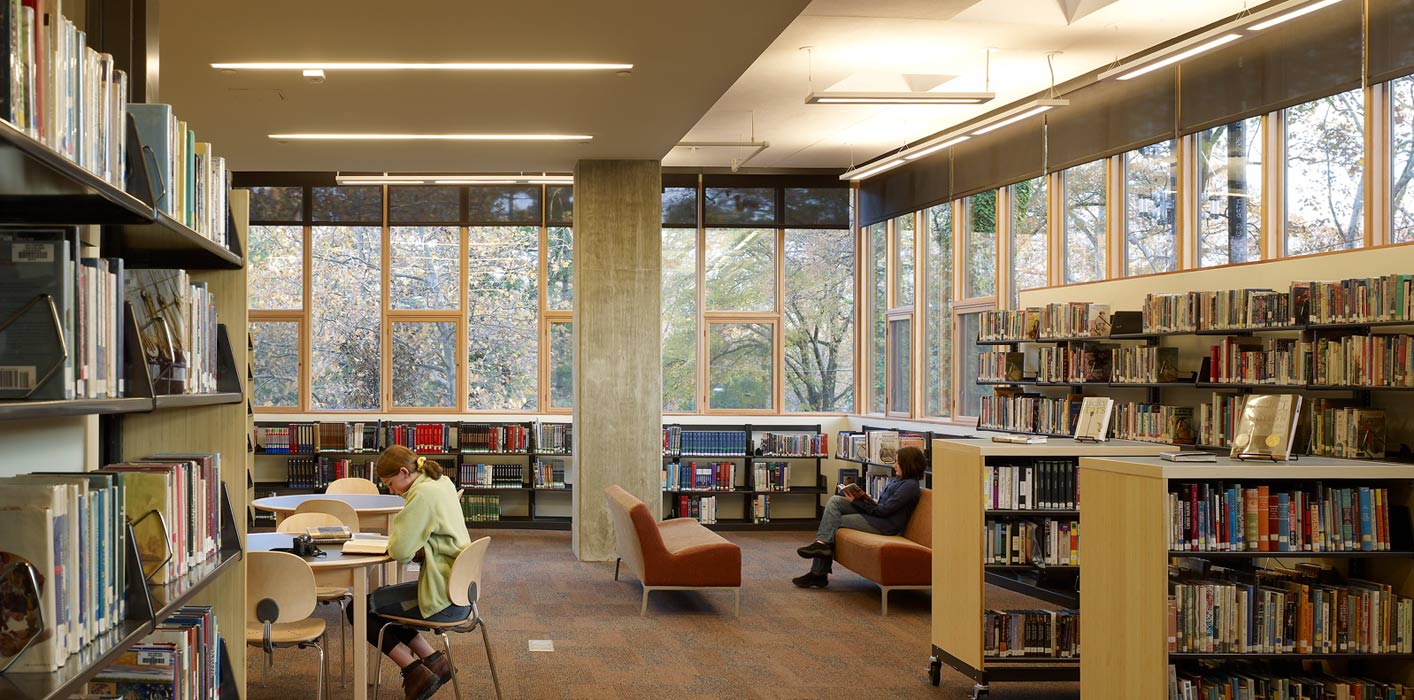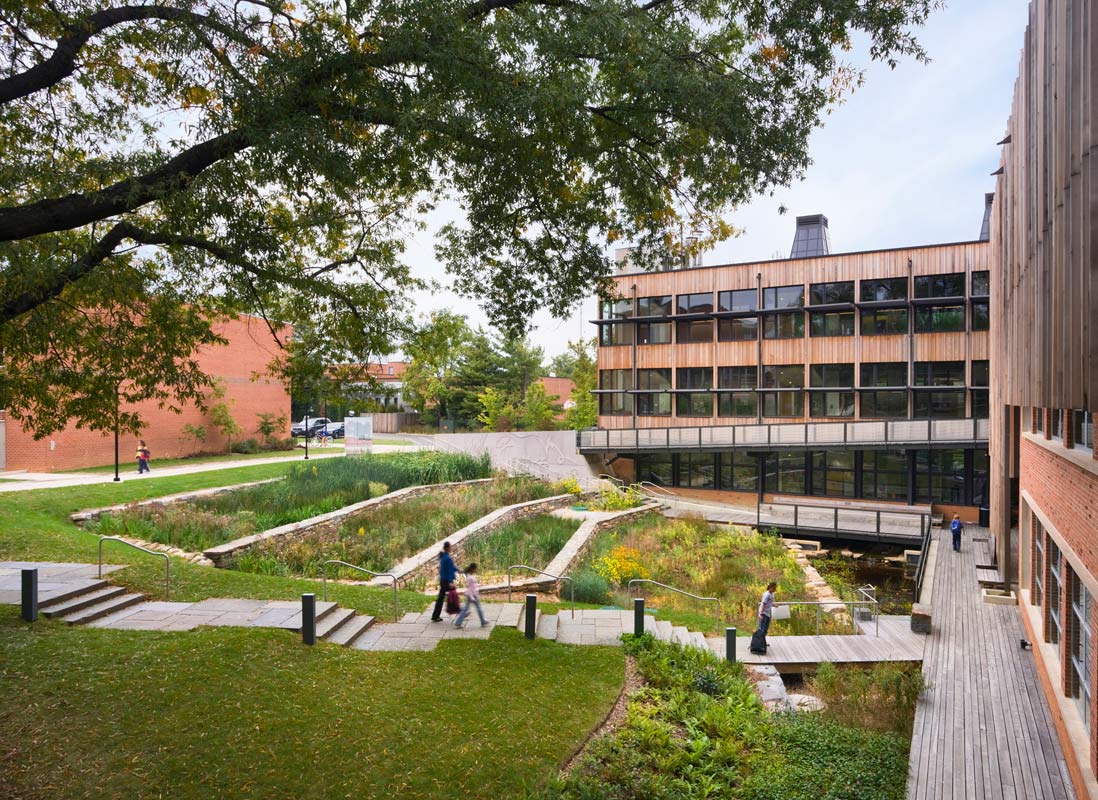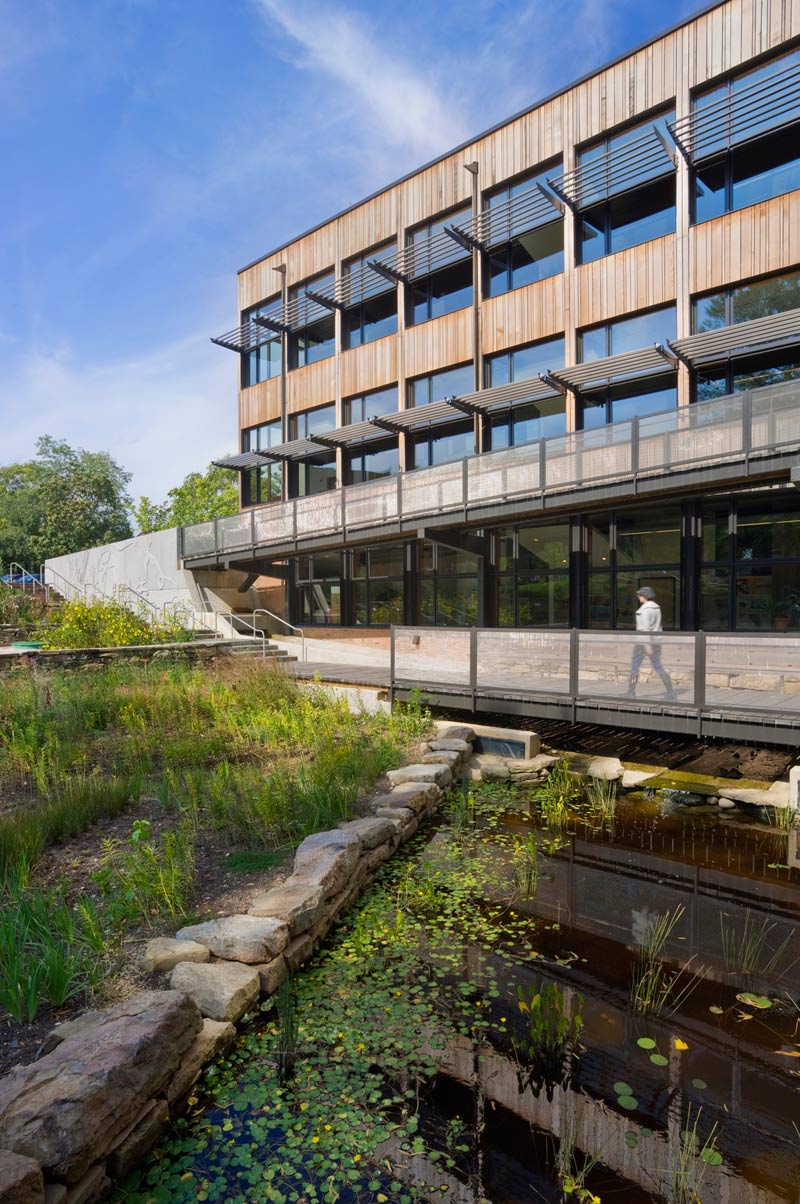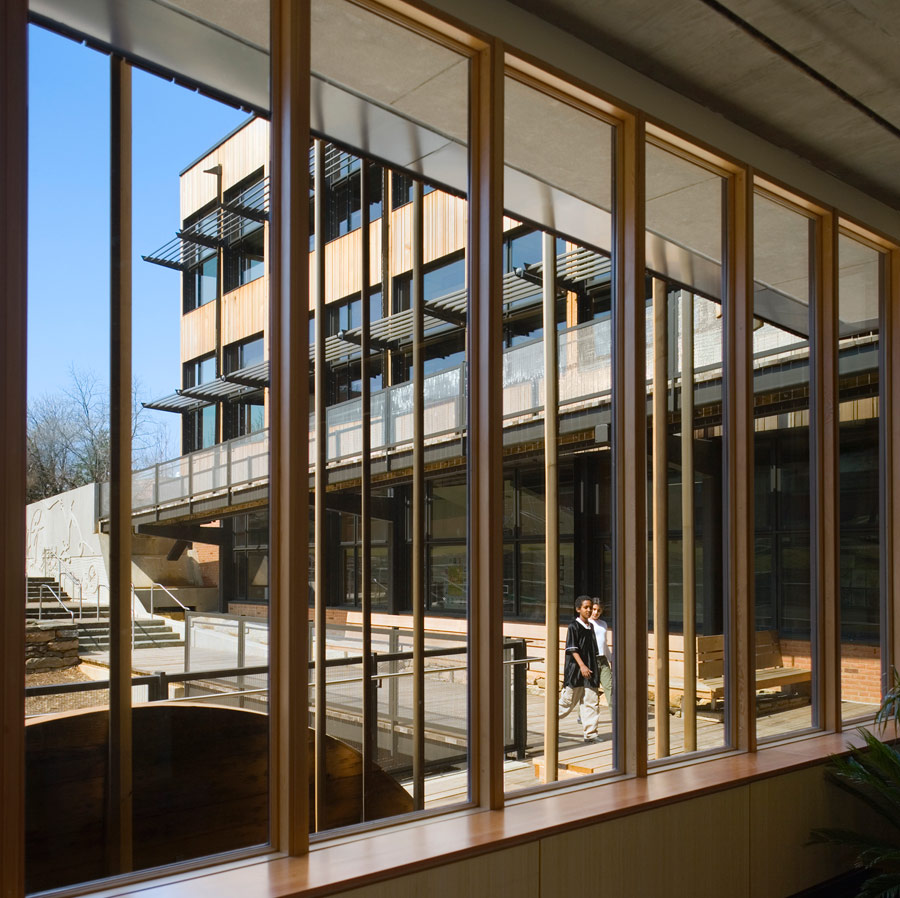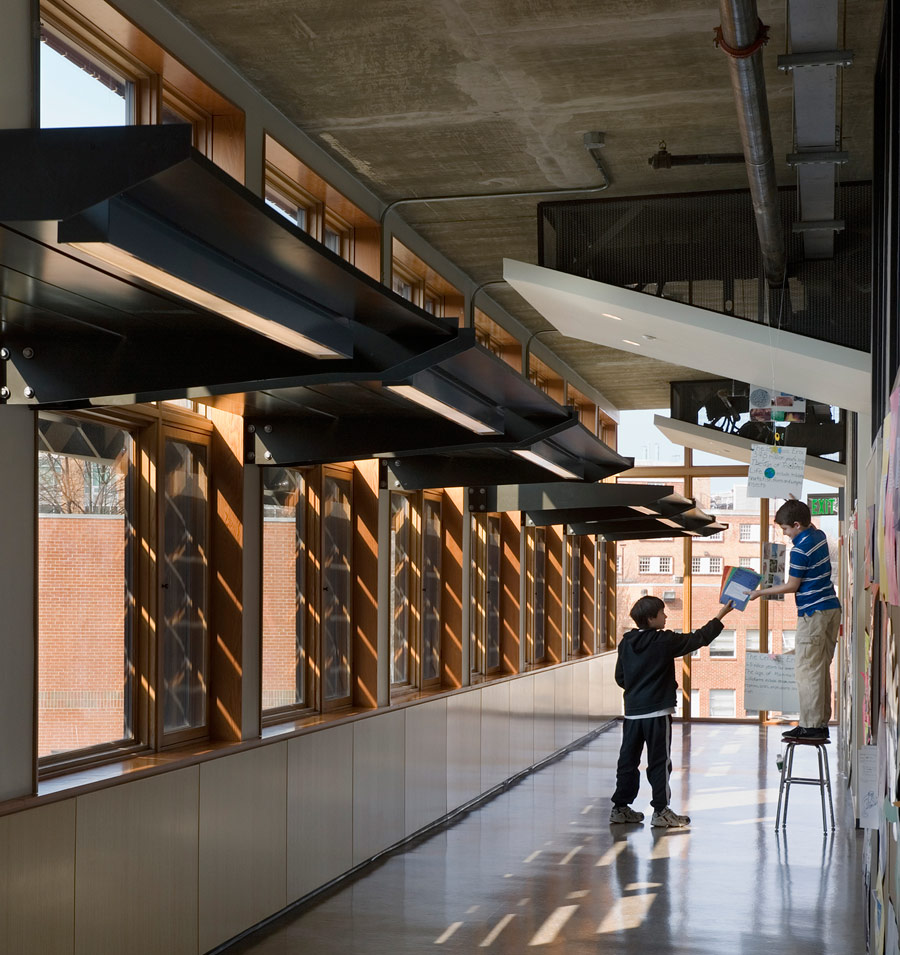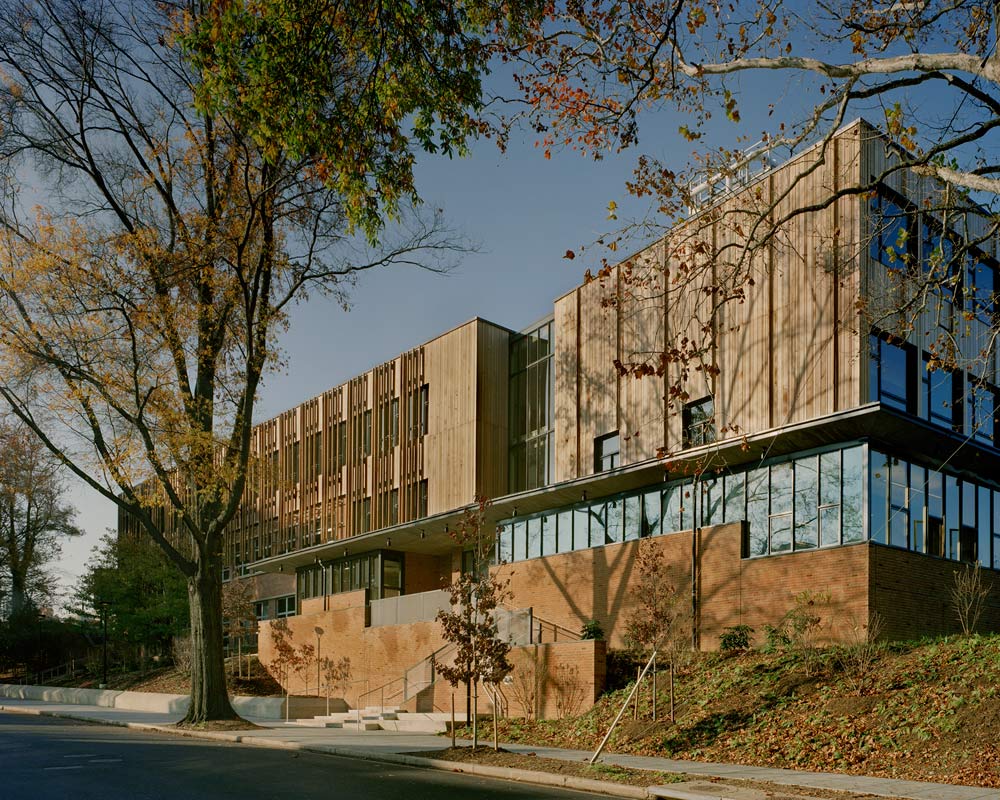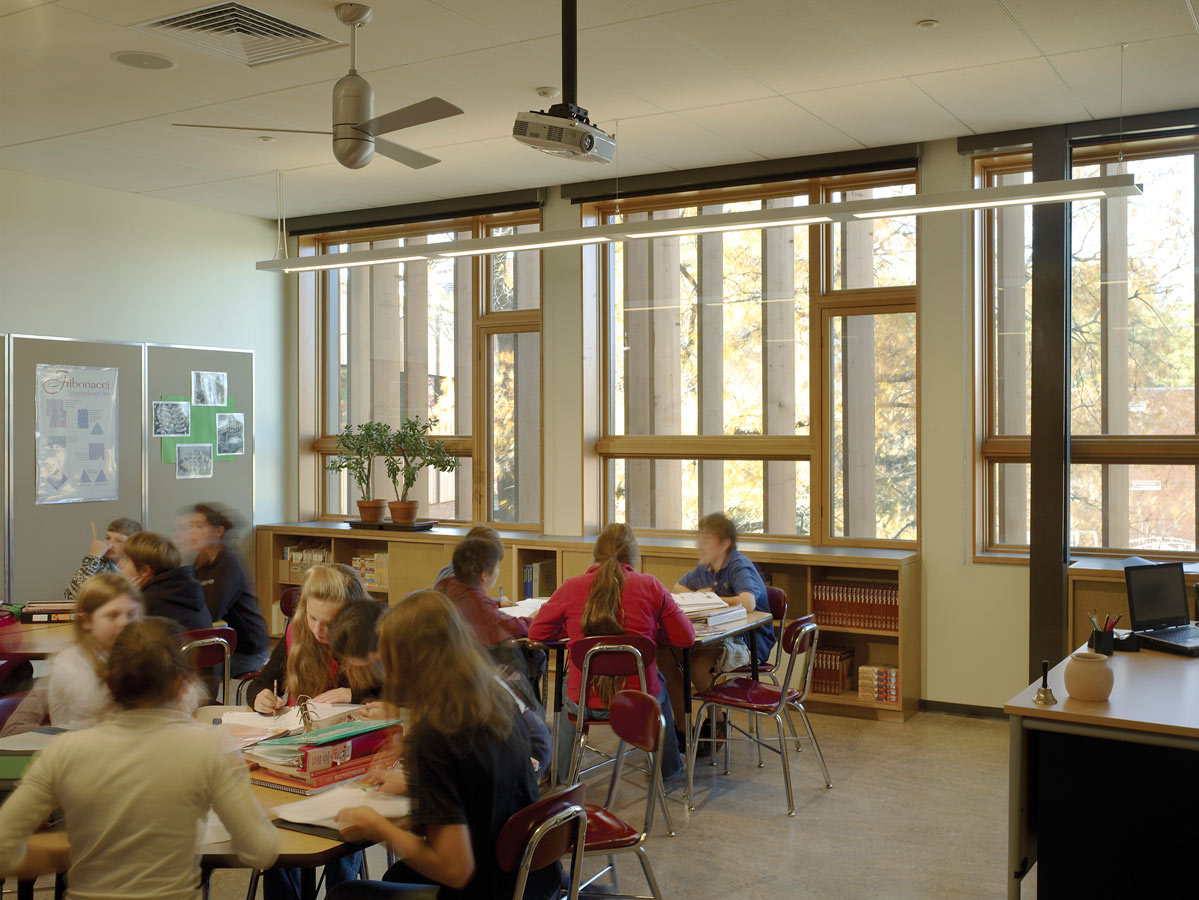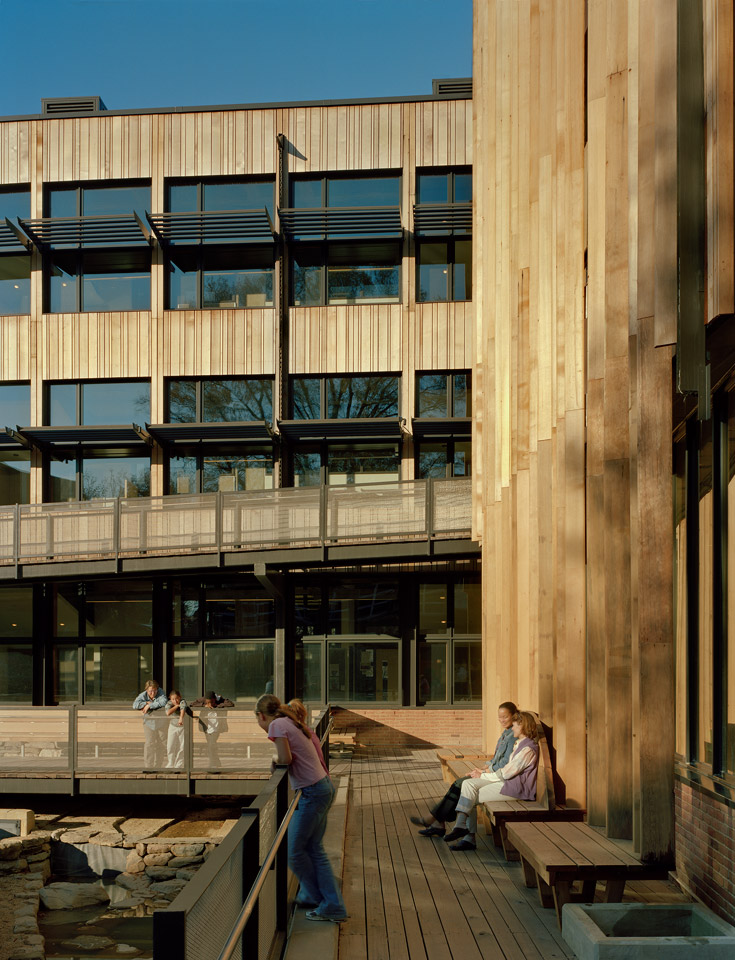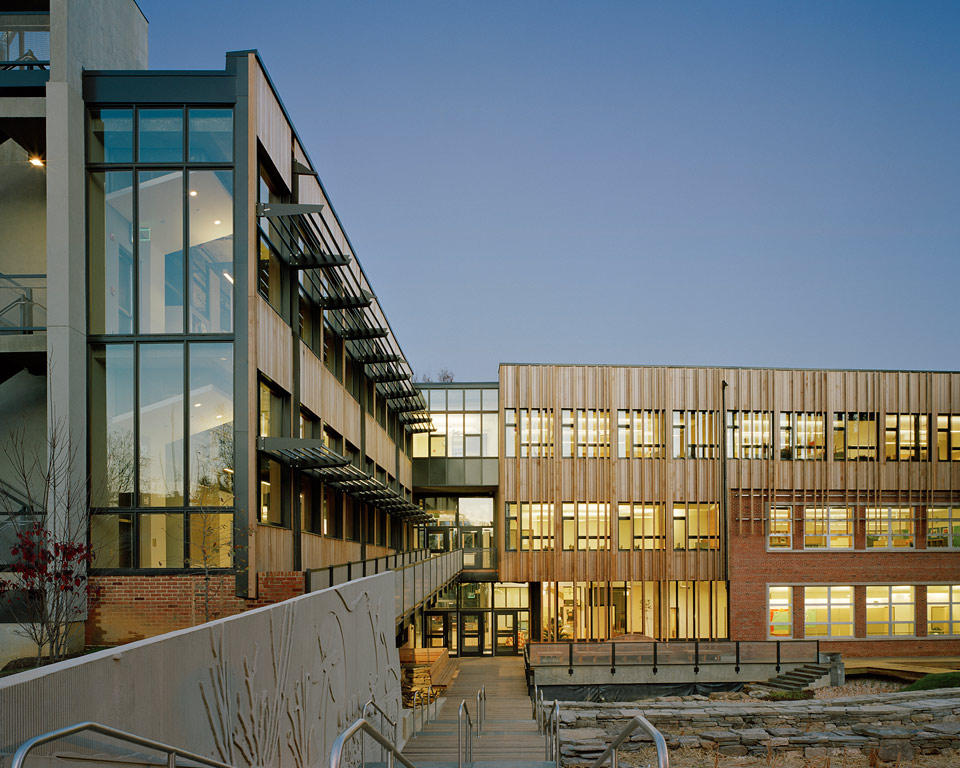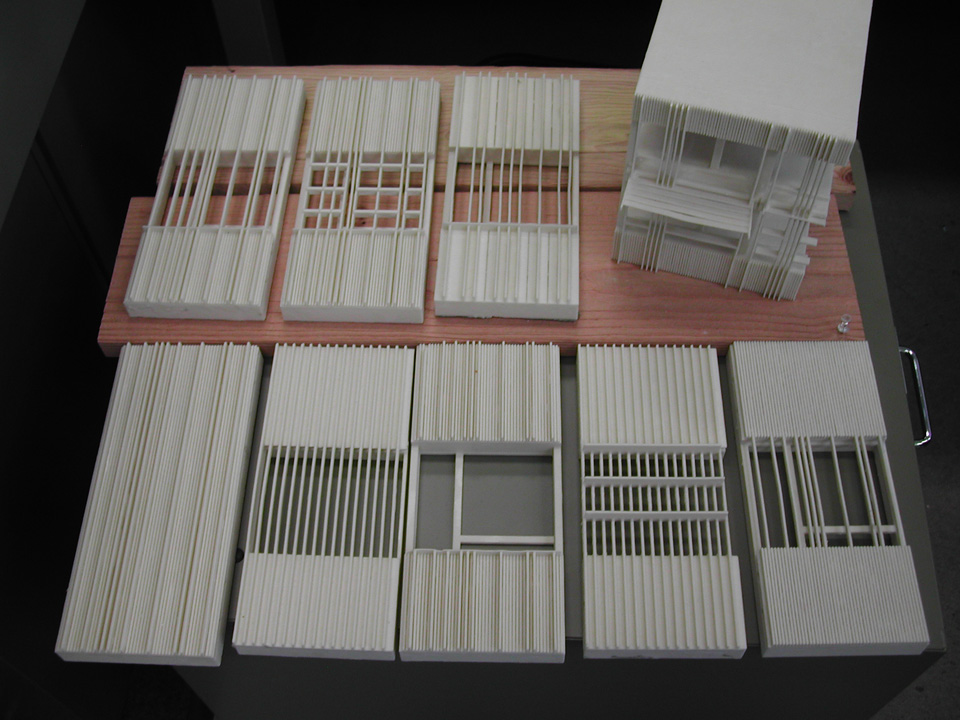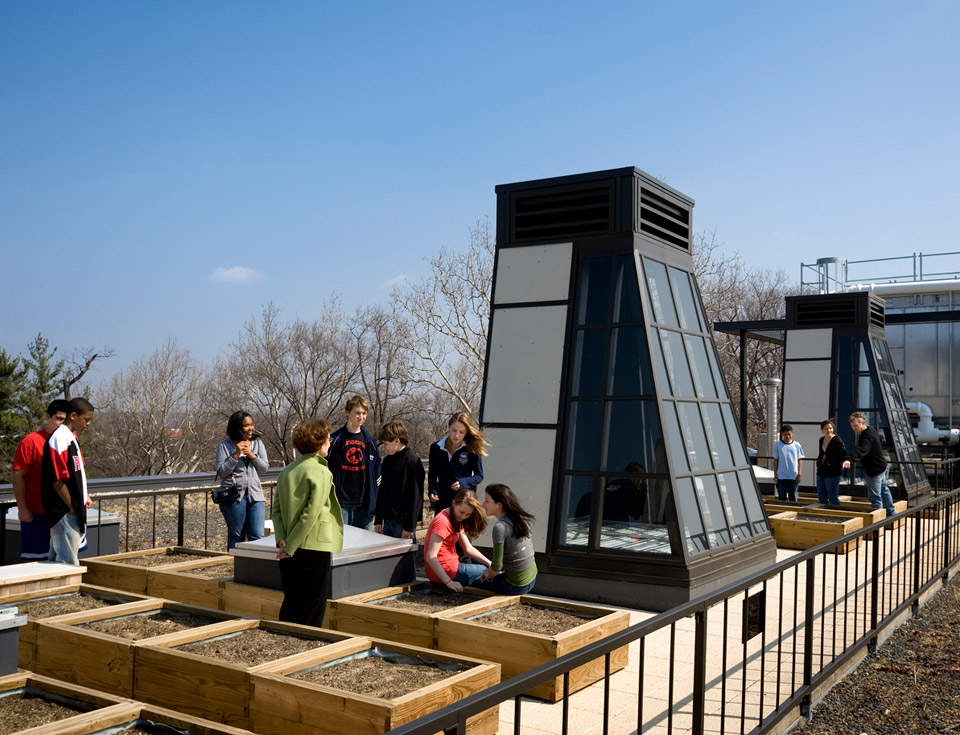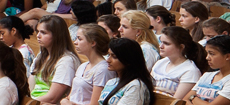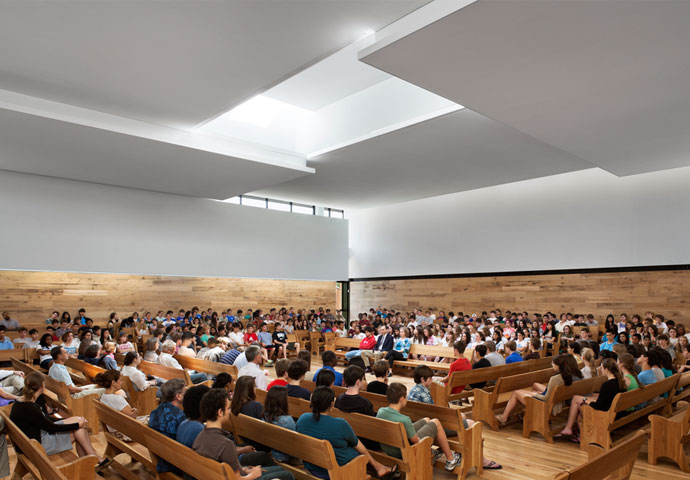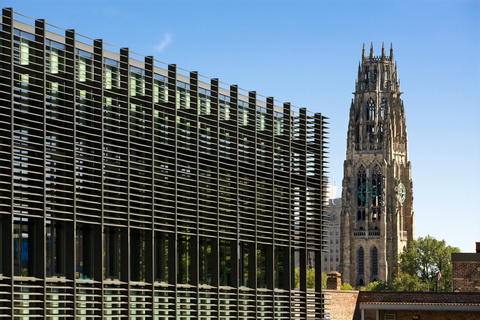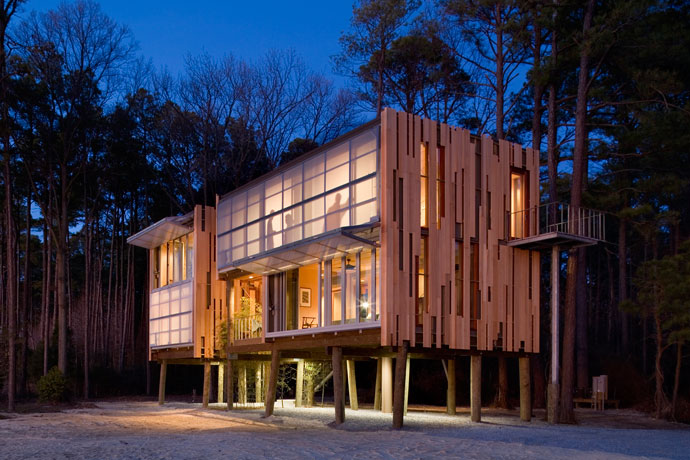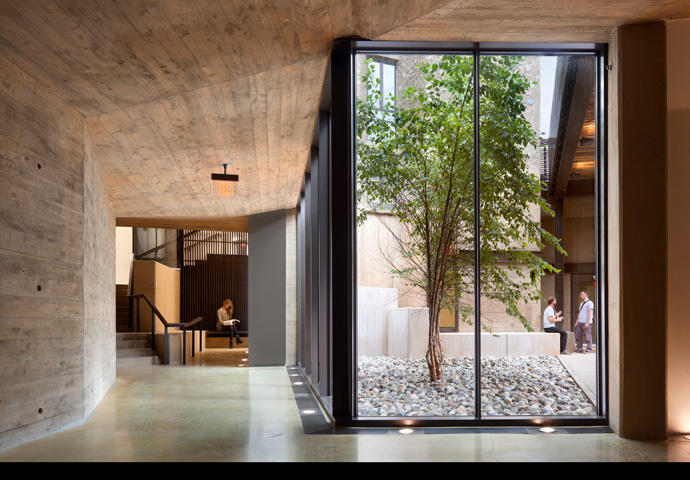How can we transform an outdated facility into an interior and exterior teaching landscape that educates students about the environment?
The building's skin is made of high-quality western red cedar reclaimed from fermentation barrels. Sunscreens balance thermal comfort with optimal daylighting inside the building.
© Halkin Photography LLC
The Master Plan for the Sidwell Friends School, which we completed in 2001, outlines a phased transformation of the disparate collection of buildings on its Washington, DC, and Bethesda, Maryland, campuses into a physical demonstration of the school's values, founded in Quaker principle.
The Stewart Middle School, one of the buildings in the Master Plan, was an awkwardly-sited, undersized, 1950s facility that needed updating and expansion. All water falling on the site was shuttled into poorly repaired underground piping and directed into the municipal storm sewer system. We saw an opportunity to transform the facility into a true teaching landscape—not only inside its classrooms, but also on site—with rooftop gardens and a constructed wetland in the school's quadrangle as a metaphor for the school's commitment to sustainability.
Sustainability
We retained rainwater on a green roof, directing overflow down into a spillway, where it could make its way into a pond, rain garden, and cistern. Sewage is recycled in the wetland for grey water use in the building. A central energy plant was designed to serve the entire campus, allowing greater control of energy resources and providing a demonstration of responsible energy use to students.
Our work at Sidwell Friends School combined an evolving master plan and seven phased buildings to unite two campuses that developed without any prior planning. Driven by an environmental ethic, these projects exemplify a long-term vision that makes tangible the school's founding Quaker principles of sufficiency, stewardship, and simplicity.
© Halkin Photography LLC
The reclaimed cedar “skin” on the building was selected for its ability, like biological skin, to selectively admit and reject the environment based upon the needs of the inhabitants. The innermost layer sheds most rain water but remains open to the movement of air. The outermost layers are organized to shield sunlight based upon orientation of the sun. Very high-grade western red cedar from salvaged fermentation barrels was used to make the solar shading. To expedite construction time, the cladding was fabricated off site as integrated assemblies.
3-D printed models were used to explore solar screening options for the various facades. Solar screening is used to balance thermal comfort and lighting inside the building.
Curriculum
Today, teachers have integrated the building into the curriculum, educating students about materials and systems, from the origin of cork flooring and bamboo casework to the impact of switching a light on or off. A building dashboard provides real-time computation of the building's resource use, raising awareness of each person's role in reducing carbon footprint. Environmental science students measure and compare nitrogen and phosphorus levels of the wetland, and they learn the valuable role that wetlands play in purifying water. The vegetated roof of the addition has been developed as an outdoor classroom for container gardening, and a photovoltaic array has been installed to generate a portion of the building's electricity.
Students tend rooftop container gardens and learn about the functioning of solar chimneys for ventilation, which rely upon the energy of the sun and diminish the need for artificial cooling.
© Peter Aaron/OTTO
Solar chimneys—designed for passive ventilation, operating without additional energy—provide another learning opportunity about the sun as a primary, renewable source of energy. Sunlight heats air within the glass chimney tops, creating a convection current that draws cooler air into the building through north-facing open windows. Portals in the shaft ways allow students to witness the operation of the ventilation system. Wind chimes ring to indicate the movement of air.
The new school has sparked communal social action and inspired changes in school operations, including a new emphasis on local, organic foods in the cafeteria. It has engaged students to make the connection between the building's systems and the world outside the building—wholly consistent with Quaker values of environmental stewardship.


